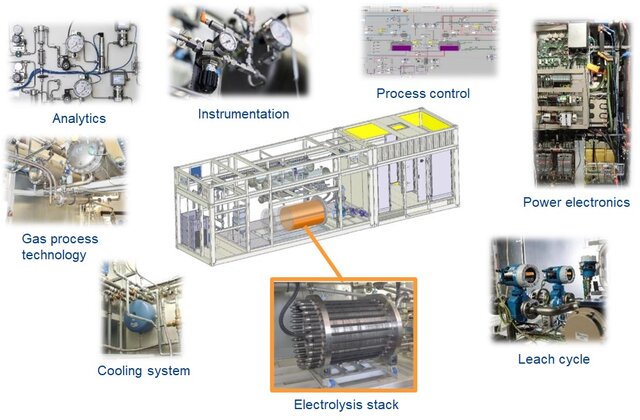// Industrial roll-out

Electrolysis is basically a long-established method of producing hydrogen from water using electricity. Competing processes using fossil fuels (e.g. steam natural gas reforming) have been much more economical to date, however, which is why electrolysis was only used in niche applications for a long time. There was no need to push forward developments aimed at greater efficiency, dynamic and intermittent operation, but nor was it necessary to move from manufacturing processes towards series production. This situation is changing rapidly in the course of the energy transition because green hydrogen (produced from renewable electricity) will play a key role in the future energy system. Hydrogen can facilitate the connection of electricity, mobility, chemical industry and also heat in a coupling of energy sectors referred to as integrated energy. Only with the help of electricity-based hydrogen and its derivatives will it be possible in future to achieve carbon neutrality in certain areas of application like the steel industry but also in heavy goods transport and air traffic.
The main technical challenges which still exist in order to achieve the economic production of green hydrogen for a successful market launch of electrolysis technology are listed below:
- Modular design and standardisation of components and assemblies as the basis for future automated series production, facilitating further savings in capital spending on electrolysers through economies of scale.
- Use or adaptation of proven manufacturing technologies (e.g. injection moulding), making it possible to reproduce components or identical parts and produce them in large quantities in a short time.
- Improved materials and methods with a view to improving robustness, service life and efficiency in order to reduce operating costs and further increase plant availability.
- Due consideration of sustainability at every stage of development bearing in mind the ease of reuse, repair and recycling as a basic principle.

